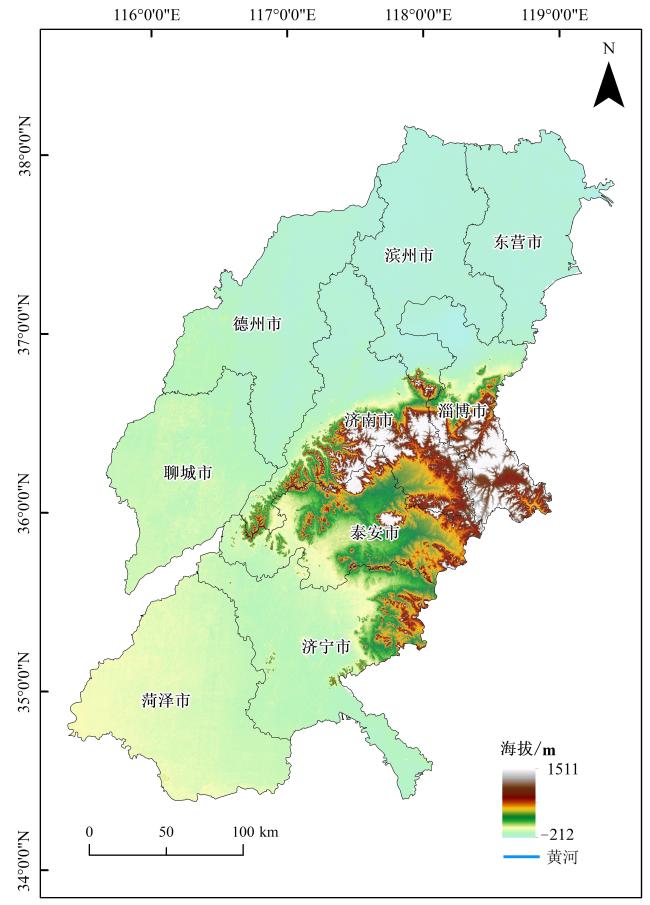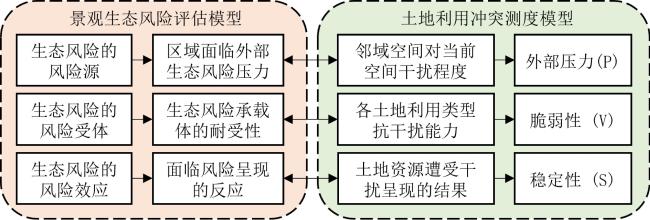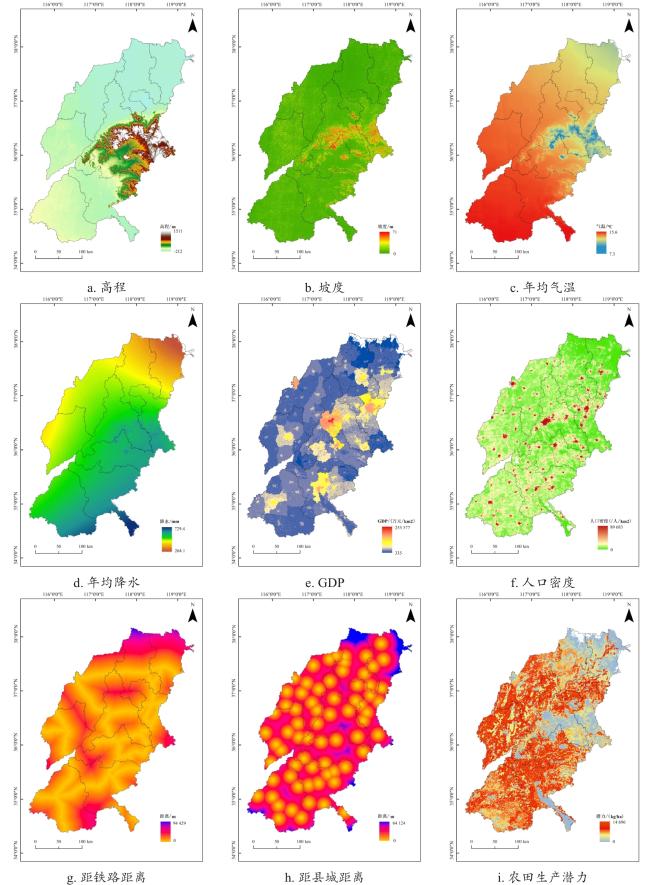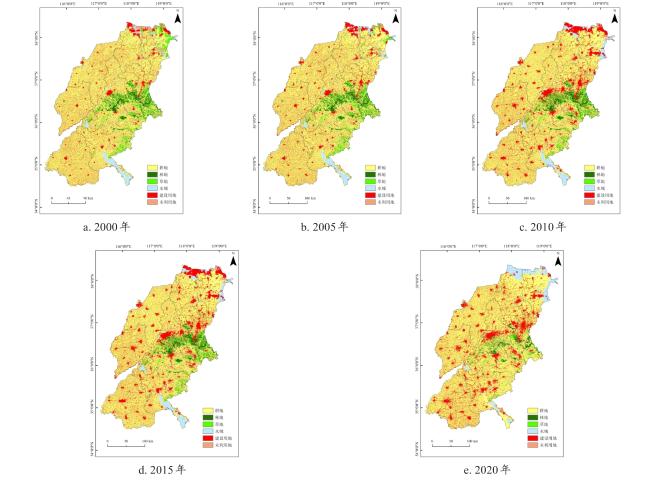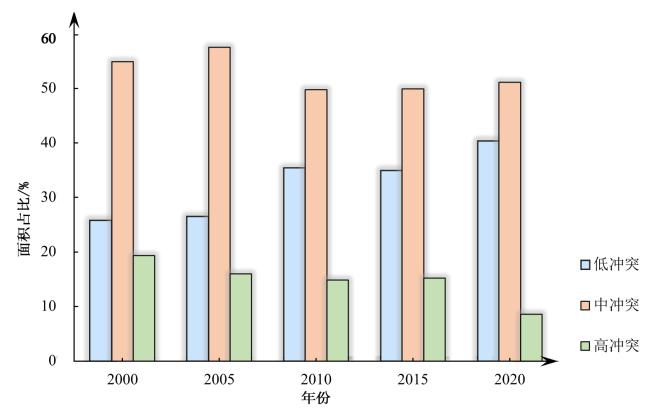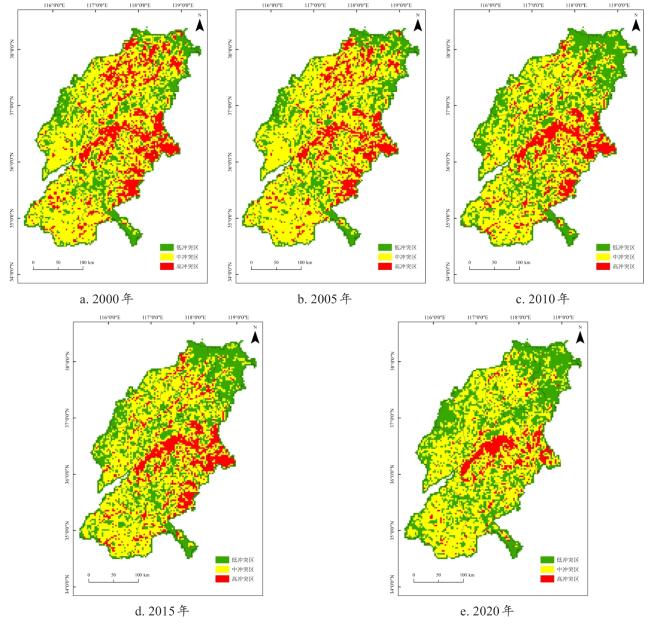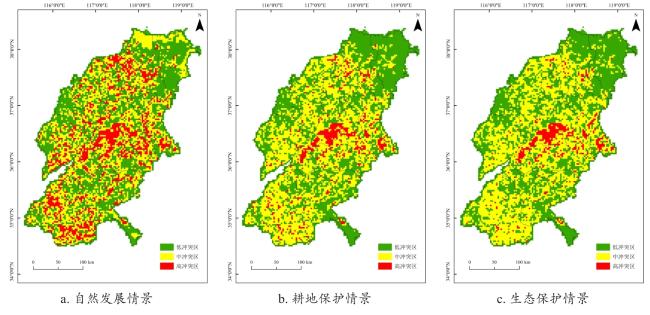[Objective] The frequent occurrence of land use conflicts, such as the occupation of arable land by urban construction land expansion, non-grain use of arable land, and the shrinking of ecological space, poses multiple pressures on the Shandong section of the Yellow River in terms of economic development, arable land protection, and ecological conservation. Accurately identifying and predicting future trends of land-use conflicts in the Shandong section of the Yellow River under various scenarios will provide a reference for the governance of land use conflicts, rational land resource utilization, and optimization of the national land spatial pattern in this region. [Methods] The data used mainly including land use data, elevation data, basic geographic information data, meteorological data, protected area data, and socio-economic data. Drawing from the concept of ecological risk assessment, an "External Pressure + Vulnerability-Stability" model was constructed. Indicators such as area-weighted average patch fractal dimension, landscape value of land use types, and patch density were used to quantify and characterize land use conflicts in the Shandong section of the Yellow River from 2000 to 2020. Subsequently, the CA-Markov model was employed to establish cellular automata transition rules, with a 10-year simulation period using a default 5×5 cellular filter matrix, projecting 2030 land use conflict patterns under natural development, cultivated land protection, and ecological conservation scenarios. [Results and Discussions] From 2000 to 2020, significant changes in land use were observed in the Shandong section of the Yellow River, mainly characterized by rapid expansion of urban construction land and a reduction in grassland and arable land. Urban construction land increased by 4 346 km2, with its proportion rising from 13.50% in 2000 to 18.67% in 2020. During the study period, the level of land use conflict showed a mitigating trend, with the average land use conflict index decreasing from 0.567 in 2000 to 0.522. Medium conflict has been the dominant type of land use conflict in the Shandong section of the Yellow River, followed by low conflict, while high conflict accounted for the smallest proportion. This indicate that land use conflicts in the region were generally controllable. The spatial pattern of land use conflicts in the Shandong section of the Yellow River remained relatively stable. Low conflicts were mainly distributed in areas with high concentration of arable land and water bodies, as well as in urban built-up areas. Medium conflicts were most widespread, especially in the transitional zones between arable land and rural settlements, and between arable land and forest land. The proportion of high conflict decreased from 19.34% in 2000 to 8.61% in 2020, mainly clustering in the transitional zones between urban construction land and other land types, the land type interlacing belt in the Central Shandong Hills, and along the Yellow River. The multi-scenario land use simulation results for 2030 showed significant differences in land use changes under different scenarios. Under the natural development scenario, the level of land use conflict was expected to deteriorate, with the most severe conflict situation. While both arable land protection and ecological conservation scenarios demonstrate partial conflict mitigation, the expansion of arable land occurs at the expense of ecological spaces, potentially compromising regional ecological security. In contrast, under the ecological conservation scenario, by prioritizing ecological protection and highlighting the protection of the ecological environment, the expansion of urban construction land and the reclamation of arable land, which cause ecological damage, were effectively curbed. Notably, this scenario exhibited the lowest proportion of high conflicts and demonstrated superior conflict mitigation effectiveness. [Conclusions] Land use conflicts in the Shandong section of the Yellow River have been somewhat mitigated, with the main form of conflict being the rapid expansion of urban construction land encroaching on arable land and ecological land. The ecological conservation scenario effectively balances the relationship between arable land protection, ecological security, and urbanization development, and is an optimal strategy for alleviating land use conflicts in the Shandong section of the Yellow River.




